The arthrosis of the knee joint combines two processes: the destruction of cartilage and the growth of osteophytes or bone spurs.The process of the process is determined by the X -ray.It is believed that arthrosis is the destruction of knee joints with age, the natural process of aging.The reasons are the weakening of the muscles and the poor blood supply to the tissue.How to treat without surgery?Eliminate the factors that reduce muscle tone.
Reasons
The causes of arthrosis are not yet determined by medicine,Only risk factors are named:Age over 45 years, knee injuries and overweight.Almost 50% of the adult population has ever complained about the knee joint.
With arthrosis, cartilage lining the ends of the bones is abrasion or completely absent.Damaged tissue is not a source of pain as there are no receptors.Inflammation in nearby structures causes characteristic symptoms.
The body continues the regeneration of damaged tissues, but cartilage grows unevenly.As a result, irregularities are formed that injure other elements of the joint.The character of osteophytes is explained by compensation for smooth joint cartilage.Another version shows that the growth of "spurs"It is associated with an attempt to stabilize the joint medially or laterally due to muscle weakening.
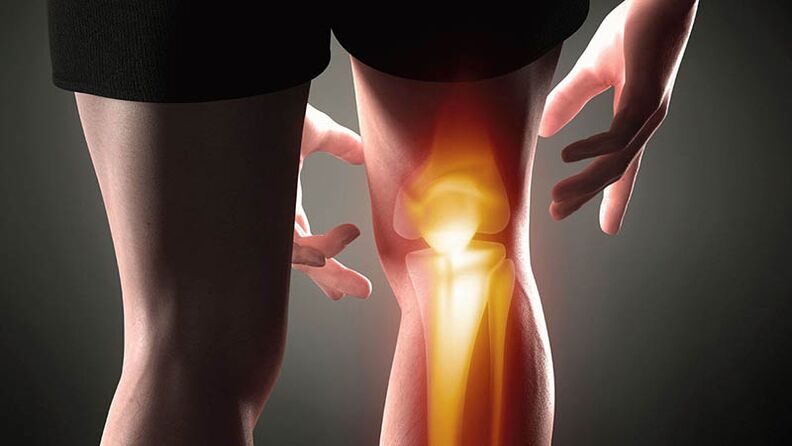
What is the chronic arthrosis of the knee joint?The pain occurs in the tendons and relationships only when the muscle forces stop holding the bones and control them.Therefore, biomechanical causes of pain and arthrosis are distinguished:
- Against the background of the long seatThere is a compression between the inguinal ligament and the finger of the Iliaak, which moves on the femur and nerve, which weakens the power of the anterior part of the thigh and leads to the appearance of tension in the tendon under the knee cup.
- Long -term sitting squeezes the gluteal musclesTheir weakening.Instead, the pear muscles begin to work under which the sciatic nerve passes.During its compression, the double muscle weakens, the angle of the thigh and lower leg changes.The knee is injured.
- ElectricityIt causes tension of the calf muscles, unfolds the pelvis, weakens the middle gluteal muscles.The bones of the femur turn inside, the ligaments are loaded on the inside of the knee, the medial meniscus, the osteophytes grow.
- Flat legsAssociated with wearing uncomfortable shoes, weakening of leading muscles and increased lordosis, deploying the tibial bone outwards, leading to knee pain due to a disturbance of biomechanics, the development of the bakery cyst.
The pathological chains affecting the knee are associated with falling on the tail in childhood, scoliosis caused by diseases of the internal organs.People who have different shoulder height,Over time, they begin to complain of the kneeSince the fascial chains in the front of the body include the extension of this joint - the muscle of the rectus of the thigh.
Symptoms
The degenerative process disrupts the function of the joint, leads to pain and stiffness.It is believed to beFrom the cartilage and bone the effect on the muscles beginsSPractice shows the opposite -Knee pain occurs found in places of tendons- The fastening of the weakened muscles of extensors, flexors and knee stabilizers.
The main signs of the threat of cartilage wear:
- From time to time, the discomfort associated with walking, the feeling of "not so much his feet."
- The appearance of pain with direct load on the joint and muscles, bending and lengthening - squat, climb the stairs.
- Knee pain and stiffness after prolonged inactivity or rest, for example, when getting out of bed in the morning, which is associated with stagnation of venous blood.
The main signs of arthrosis are caused by the load of the weakened muscles:
- The knees in the knees are related to the fact that the gluteal and two -headed muscle, which extends to the thigh, does not function, and the muscle of the thigh of the rectus stretches excessively, creating discomfort in the knee.
- The pain when bending the joint is associated with the weakness of the flexors - the double -headed muscle and the tension of the tendon of the quadriceps.
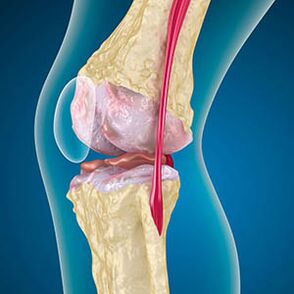
The swelling is caused by injury to the soft tissues, inflammation of the tendons and the bag of the joints.The appearance of heat in the knee, swelling indicates the accumulation of inflammatory exudate -Arthrosis is often accompanied by bursitis, synovites, tendonitis.
The crunch in the knee is painless and traumatic.Clinks and other sounds do not say that bones are abrasion.Signs of a knee stability violation -The weakness of one of the muscle control.
Crisbing caused by bone friction on the bone does not appear at the beginning and end of the movement amplitude, but in the middle,Even with passive joint flexionSThe blocking of the joints is caused by the wear of the cartilage and tendons, which creates a sense of fixation.The bones with each movement are controlled by the muscles.Their untimely reduction leads to a changed direction of bone movement, blocking.
1 degree
Determining the degree of arthrosis arises through x -rayDiscovering participation in the pathological process of bone structures.Their change indicates that the muscular system has been in imbalance for 5-10 years.As a rule, peopleFor several years they have been experiencing painS
In the first stage of arthrosis, which is discovered by accident, a slight increase in bone spurs occurs.The growth appears in places with the most large instability of the joint.Usually patients rarely experience pain or discomfort during movement.
The weakness of some muscles is offset by the function of others without causing severe cramps and overloads.Mileage and weight training cause symptoms as weakened muscles are loaded.Weakness (hypotension) of the muscles is associated with impaired blood supply and innervation.
2 degrees
The second stage of arthrosis is considered easy.Radiography reveals significant bone spurs, but cartilage is not affected.The amount of synovial fluid is reduced, but the symptoms of pain appear after long walking and running, stiffness in the joint and soreness when bending and in the knee position.
Early X -Ray characteristics of the second stage of knee arthrosis:
- the sharpened edges of the tibia's intercity tubercles, where the cross ligament is attached;
- narrowing of the joint precipice from the medial side;
- The evaluated edges of the bone bones from the medial side, less often in the lateral ones - depending on the development of the deformity of the valgus or the version of the joints.
For the second stage in LarsenNarrowing the gap of joints with more than 50% is characteristic, but this can only be checked in dynamics or comparison with different joints.
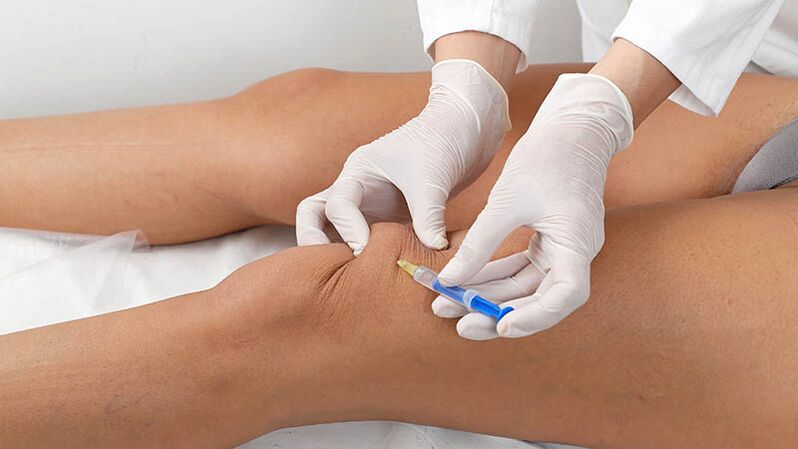
3 degrees
In the third stage of arthrosisThe pain during bending and lengthening of the joint becomes constant.During the exacerbation, the joints blush and swell, the pain does not stop at rest.There is swelling around the knee, noticeable deformity of the joints of the joint.
Signs of moderate arthrosis of the knee joint in the third stage:
- The joint difference is significantly narrowed;
- The presence of subchondral sclerosis in the loaded sections;
- Numerous osteophytes at the edges;
- rare appearance of subchondral cysts;
- Sinovites, the appearance of a bakery cyst below the knee;
- uneven surfaces of the femur and tibia, the loss of the joints of the joint;
- change in the shape of a patella;
- foci of calcification and chondromation;
Rarely the fourth stage is complemented by necrotic lesionsSWhy is arthrosis dangerous?The disease disrupts the ability to move, creates dependence on others.
Diagnostics
Orthopedist studies signs of edema, palpate the joint of soreness, study the active and passive range of movement.Necessarily checks the lumbar spine becauseThis is where the nerves pass, which ensure the function of the thigh muscles.
Radiography shows the presence of osteophytes, a change in the space between the bones of the femur and the tibia, which shows the loss of cartilage in the knee.Sometimes the X -rhina of the knee joints shows significant signs of cartilage wear, but patients do not experience significant pain.On the contrary, the first stage arthrosis may disrupt knee functionbecause the cause of the pain is hypotonic muscles.
If x -ray does not show big changes thenThe doctor prescribes MRI on the knee joint and lumbarSDiagnosis visualizes the ligaments, tendons and muscles, meniscus to find other sources of pain.
Laboratory diagnostics requiredIf you suspect infectious damage to the joint or gout.
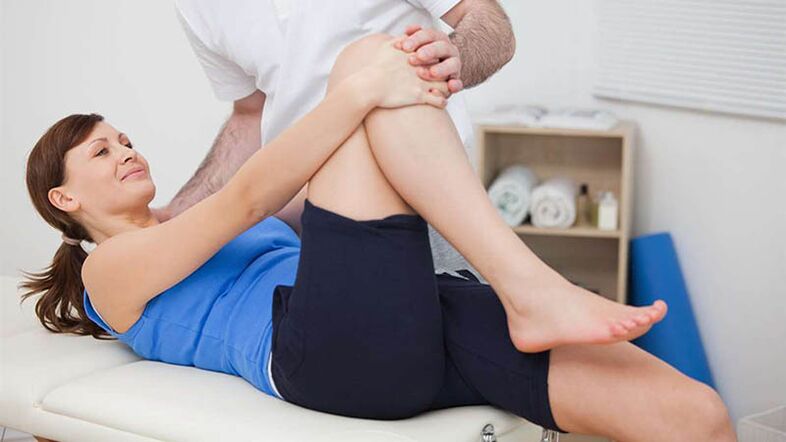
Treatment
Arthrosis therapy should be exhaustiveaimed at the cause of the disease.With endocrine dysfunctions capable of affecting connective tissues, appropriate treatment is performed.Overweight patients are recommendedGo to the right mealSExacerbations are removed with medicines.
Medication
Treatment of the pain of pain consists inPrescribing anti -inflammatory drugsSNon -steroidal anti -inflammatory drugs with prolonged useThey have a negative effect on the function of the stomach.
Treatment regimen includes chondroprotectors that only help with long courses during3-6 monthsSPharmacies are a large number of medicines in this group.
The components of these drugs are thought to help regenerate the structure of the cartilage, have an analgesic effect.
Controlled studies have been conducted by a smallAnd they relate to complex treatment - arthroplasty, physiotherapy, diet.
Warning!Chondroprotectors are drunk in courses - you can drink one course of one medicine and the second course - the other and compare the effect.However, uncontrolled drug is not the best idea.Before taking drugs, consult your doctor.
How and what to relieve pain and swelling?Intracecular injections are more popular:
- Steroid drugsThey inhibit inflammatory reactions to the level of immune cells, eliminating acute pain, joint joints and swelling.
- Hyaluronic acidIncreases the viscosity of the joint fluid, reducing the friction of the joint surfaces.
Important!The effect of medicines is sufficient for 6-12 months, but at the same time the degenerative processes do not stop.
Surgical treatment
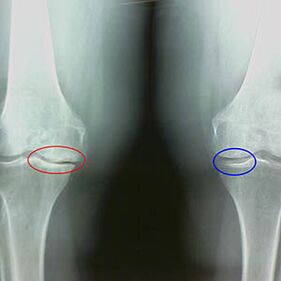
With low drug efficiency, arthroscopy is offered- minimally invasive procedure for bone growth removal, joint audit.If necessary, surgeons perform connections and cartilage plastic, remove the outbreaks of worn tissue.
Bone osteotomy is aimed at changing the axis of joint loadSThe doctor cuts the femur or berets to change the contact areas of the joint surfaces.Surgery is often performed in young patients.
General replacement of knee joint or arthroplastyIt is necessary in the severe stage of arthrosis (third or fourth degree).Surgical treatment does not always solve the problem as it requires diligent and daily rehabilitation, strengthening the muscles.
Changes in the knee can be compensatory for the pelvis, therefore without restoring muscle balance, the hip joint suffers afterwards.
Physiotherapy
Mud applications, phonophoresis and magnetic therapy are used in the environment of physiotherapy.The action of external factors is aimed atStimulating blood supply and tissue regeneration, relieving inflammation and swelling.
Treatment with folk and unconventional methods
Usually recipes of folk remedies to treat arthrosis of the knee joints at homeaimed at eliminating swelling and eliminating painSMost often, horseradish leaves and potato porridge are used, sometimes mixed and vodka for compresses are mixed.
It is impossible to completely stop degenerationSYou can affect the kidney exchange using celery juice.The kidneys are associated with the iliac-luxury muscle, which is associated with pathologies of the hip joint.Normalizing the function of the gallbladder and liver improves the condition of the knees.
The initial stage treatment methods at the knee arthrosis include the decoction of anti -inflammatory herbs:Chamomile, St. John's wort, immortality.Ground garbage, sea salt and kerosene are used.Magnesium salts baths are used pine infusions.
Manual therapy and massage
Manual therapy for knee osteoarthrosis, if a specialist understands the only masculine imbalance.Muscle tests help to find weakened muscles that stabilize the knee, determine the cause of dysfunction and eliminate it.
The source can not only be the joint block in the lumbar region,But also dysfunctions of blood supply, internal organs, endocrine and biochemical damageSTherefore, the manual therapist must have osteopathy skills, applied kinesiology, to influence many factors.
Massage is an auxiliary tool for manual therapy alone.A patient with knee arthrosis can independently knead the tendons of the muscles that control the movement of the limb:
- the area around the large gluteal muscle;
- lines on the anterior surface of the thigh - from the pelvis to the patella;
- The lateral surface of the thigh from the large swing to the thigh wits;
- The groin area along the inguinal ligament;
- The inner surface of the thigh (along the leading channel).
The massage is done on the spot without much pressing.
Therapeutic gymnastics
The cause of arthrosis is the weakening of the muscles caused by problems in the lower back, the pool, the abdominal cavity.Do exercises to prevent arthritis and arthrosis of the knee joints for the elderlyIt is possible to increase strength but not toneS
Without working on the factors of their weight loss with the help of manual therapy, it is difficult to achieve complete restoration of biomechanics.Yoga further deprives the joints of stability.Among the methods of treatment is better to preferPilates and Scandinavian walkingS
Diet
The food is regulated first to fight overweight.It is important to abandon sugar and simple carbohydrates, Add products with fiber, magnesium, B vitamins and calcium with knee arthrosis, which are important for muscle activity.TryTurn off dairy productsSince almost 80% of the population has lactose intolerance.
Prevention of arthrosis of the knee joints
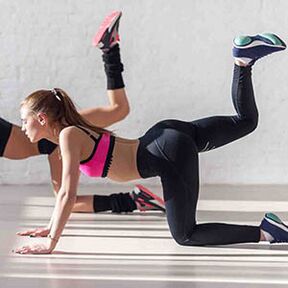
Attempts to strengthen muscles do not always helpsince innervation and blood supply do not recover.The function of the hip muscles depends on the lumbar plexus.
Changes in the lower back, associated with the weakness of the abdominal muscles, also affect the knees.Therefore, in men with a "beer belly" arthrosis is more common, as in women after multiginide, several genera with diastasis - weakening of the muscles of the abdominal wall.
Operations in the pelvis and internal organs form adhesions that affect the vertebrae of the lumbar region, disrupting the innervation of the muscles around the knee.
Which doctor to contact with knee arthrosis?The diagnosis will help to make an orthopedistWho will insist on the operation.The best results are given by the work of multidisciplinary teams in rehabilitation centers.
The best thing that can be done for the joints:Eat properly, observe the weight, walk more, visit a massage therapist or osteopath once every three months.
Treatment Reviews
Positive reviews can only provide complete treatment for deformation of knee arthrosis or gonarthrosis.Anesthesia, intraidacular injections act temporarily, suppressing the natural inflammatory reaction.
Conclusion
The problem with arthrosis is that drug therapy temporarily eliminates only pain syndromes.The reasons are left without identification and influence.Ergotherapists who learn how to live with knee arthrosis can also help you use a cane properly.But the service is only available in private rehabilitation clinics.























